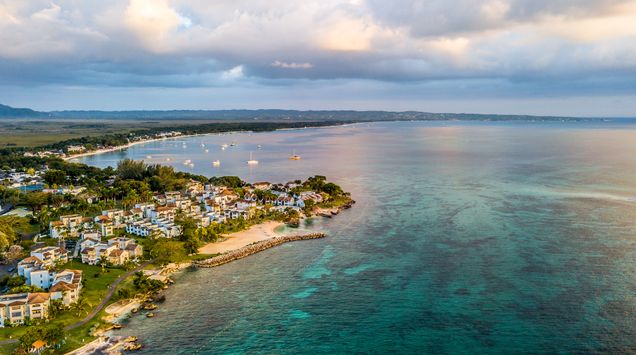Achieving Catalytic Impact with the Resilience and Sustainability Trust

The Resilience and Sustainability Trust (RST) at the International Monetary Fund (IMF) fills a major gap in both the climate finance and balance of payments architectures. However, the RST will lack effectiveness without significant reform. When viewed against the resource mobilization challenges that emerging market and developing economies face, it is especially important for the RST to support catalytic change in a manner that reinforces country-owned plans and strategies.
The IMF established the RST in April 2022, and it became operational in October 2022. The RST is funded through re-channeled Special Drawing Rights (SDRs), the Fund’s reserve asset. The RST finances the Resilience and Sustainability Facility (RSF), and when a country borrows, it enters an RSF arrangement with designated reform measures agreed with the IMF.
As the RST offers long-term, low-cost financing towards climate change and pandemic preparedness, it is an important and welcome addition to the IMF’s lending toolkit. Its long-term, low-cost nature is intended to allow borrowers to undertake meaningful policy reforms that would build resilience to macro-critical shocks in the future. Eligibility to the RST is broad but a concurrent IMF program is required for access. Since the time of its launch, the IMF has witnessed a very high demand for RSF arrangements. The IMF also plans to release an interim review of the initial experience of countries under RSF arrangements during the 2024 IMF/World Bank Group Spring Meetings in April 2024, and to undertake a more comprehensive RSF review in time for the Annual Meetings in October 2026, at the latest.
A new policy brief from the Task Force on Climate, Development and the IMF seeks to improve the RST’s design by taking stock of the early experiences of RST programs. This policy brief is anchored in the experiences of Bangladesh, Barbados and Jamaica with wider consultations undertaken by Task Force members.
The RST is an important example of how the international community can re-channel SDRs towards the achievement of development and climate goals. As the IMF reviews the RST, it has the opportunity to improve the effectiveness of the instrument. More broadly, early experiences of the RST offer instructive insights on the opportunities and challenges of using re-channeled SDRs.
Key policy recommendations:
- Resources. Given the strong interest in RSF arrangements, governments need to equip the RST with more resources to meet the strong demand. New pledges will be essential to ensure the sustainability of the RST. The IMF must also have the necessary human resources to support effective program design. Furthermore, the size of the RST should be calibrated against the size of climate finance needs. The RST’s terms should be affordable, and given the sharp rise in the SDR rate, the interest charge should be capped.
- Concurrent programs. The IMF should not require a concurrent IMF program to access the RST. As the very purpose of the RST is to build resilience to prospective balance of payments shocks, countries that do not currently have IMF programs should also have access to the RST.
- Program design. RSF reform measures should add momentum behind ambitious climate and development policies. Reform measures should help countries address the most salient risks and harness opportunities from the low-carbon transition. At the national level, the IMF should intensify engagement with a variety of stakeholders.
- A catalytic role. RSF arrangements should focus on catalyzing finance to achieve maximum impact. RSF arrangements should help leverage finance from the private sector. Close coordination between the IMF and development finance institutions is required to ensure that the climate finance gap can be closed.
- Collaboration. The IMF should institutionalize its collaboration with the World Bank on diagnostics that support the RSF arrangements such as Country Climate Development Reports to develop high quality reform measures as well as lending operations such as leveraging RST resources to further mobilize finance.
While the RST is far from a panacea for addressing climate change, it can be a powerful tool for emerging market and developing economies to catalyze climate and development goals – but only if it is designed to do so.
Read the Policy Brief Read the Blog